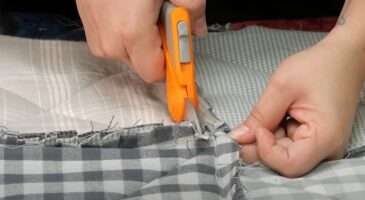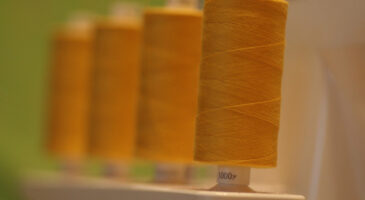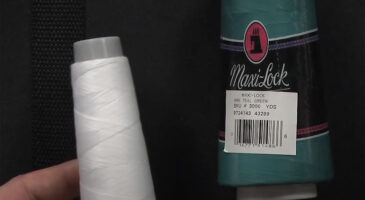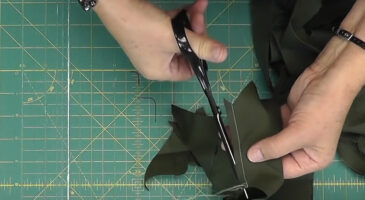In as much as it is important to stitch two fabrics to secure their suture, it is also important to be concerned about how the stitches can contribute to the overall appeal of the fabric at the end of the day. Stitching, if not rightly or neatly done, can be the sole indentation that will mar the perfection of a sewing project.
Therefore, to avoid this, sewist over the world now uses a tool called blind hem foot to make their stitches look neat and appear almost invincible. Sadly, not everyone knows what is a blind hem foot or its usefulness or how to even use this highly relevant tool.
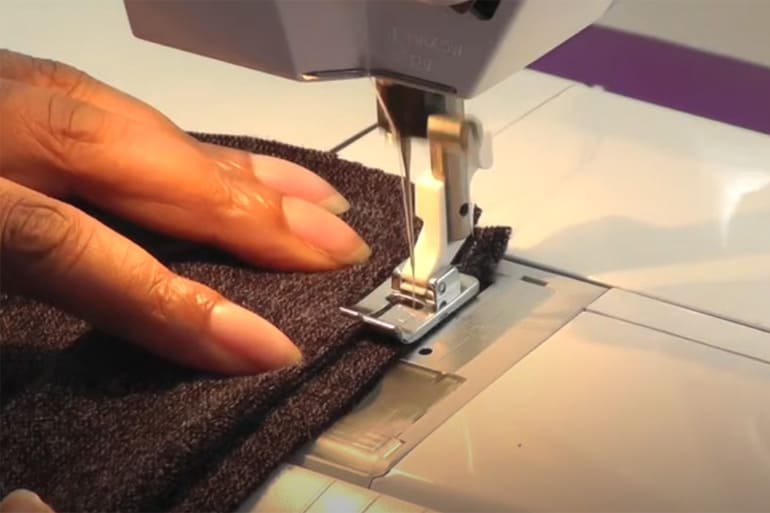
I have decided to write this helpful article to apprise people of everything they need to know about this critical sewing tool.
What is a blind hem?
Simply put, a blind hem tool is a tiny device designed to be attached to a sewing machine to make stitches nearly invincible. This sewing tool completely hides stitches both on the wrong and right sides of the fabric.
The blind hem foot has a metal guide at the center, as well as grooves under it which are used for stitching. You will learn more about these parts in the next section.
How does blind hem foot work?
While making the blind hem, the fabric fold will be comfortably fitted against the metal guide of the foot to ensure accuracy. On the other end, the grooves under the foot will help prevent the fabric from slipping unnecessarily.
As you sew to stitch, the sewing machine needle will be swinging over the guide, hence, causing the upper tension to reduce. This will result in invisible stitches.
What is a blind hem foot used for?
The major purpose of a blind hem is to make stitches look invisible.
Why is blind hem invisible foot?
- The first reason why you have to consider using a blind hem foot is to prevent stitches from showing on either side of the fabric. This will allow you to create a neat and perfect finish for your sewing project.
- With a blind hem foot installed in your sewing machine, you can make neat stitches faster compared to when you are making it by hand or with the machine without the tool installed. This will give you more time to focus on another aspect of your project that needs final touch.
- Blind hem tool is highly durable as they are made with high-quality material: stainless steel. This means that no matter how much it cost, the tool will pay for itself in the long run.
- Blind hem stitch is not expensive. The average cost of a blind hem foot is between $4 to $10 which makes them one of the most affordable sewing machine tools.
Do you need a blind hem foot?
Yes, you need a blind hem foot. Although blind hem foot is not a must-have sewing tool, it is a tool that you must consider having if you want an impeccable finish for your several sewing projects. If you are still unconvinced, you can read the previous section where I discussed why you need the foot.
How do you secure a blind hem stitch?
To secure the blind hem stitch you made, pick one or two fabric threads that are/or directly around the point where the final knot exited the fold. Note that these threads made up the visible stitch on the fabric’s right side. So to secure the stitch, pull the thread firmly but gently.
How do you install a blind hem?
- Remove the original foot from your sewing machine.
- Fix the blind hem foot in its position and clip it in.
How to use blind hem foot
- Fold the fabric
The first thing to do when using a blind hem foot is to fold the fabric. There are different ways you can do this. You can either fold the fabric edge two times or fold it in the form of a zigzag.
Although these two folding styles have a particular fabric they are suited for: the zigzag pattern will be appropriate for heavy fabrics while the double folding will be best for medium-weight fabric.
You can chalk some areas of the fabric to help you with the folding and to secure the folded section, you can iron over them or make use of pins.
- Place the fabric under the foot
Slide the hem under the foot and the needle, placing the folded segment of the fabric on the wrong side against the hem foot guide. Lower the presser foot once the fabric is intact and begin to sew the hem slowly.
- Set the width of the foot
Setting the right foot width will ensure that the fabric is perfectly joined and also make the stitches invisible from the other side. It is important to know the appropriate setting because the more the fabric caught under the hem foot, the more visible the blind hem will appear on the other side. If the foot catches less fabric, it will affect the firmness of the stitches.
Turn the hem wheel to set the right foot width setting for your project.
- Stitch the hem
Stitches made with blind hem feet will appear in two styles: For a regular fabric, it will appear as a three straight line stitch and a zigzag stitch. The former stitch will secure the folded portion of the fabric and the latter stitches will join the main body and the folded fabric together. For stretchy fabrics, small zigzag stitches will replace the three straight lines.
